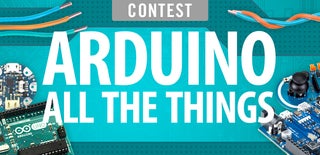Introduction: BB-8 Droid, 3D Printed & Remote Controlled
My own version BB-8, the new droid from Star Wars: The Force Awakens.
Check-out the video for a demo and overview of the assembly process.
It's powered by an Arduino board and remote controlled via RF. This droid self-balance on two wheels, play sounds, and has several programmable LEDs.
Advantages of this version:
- Half-size, meaning shorter printing time : 50 hours versus 300+ hours for a full-size version.
- 3D details on the shell meaning less painting required.
- Can easily move around on wheels, keeping its head on top.
- Robotic platform is the instabot v3 available from Sainsmart.
This BB-8 droid has been featured on IGN, LiveScience, 3DPrint.com
Step 1: 3D Model
This BB-8 was entirely designed in SketchUp. The head is printable in one piece of 11cm in diameter, and the body is divided in 8 pieces of 10x10x10cm. Here are the STLs:
- bb8_head: Entire head, the diameter is ~11cm (4.5inch)
- bb8_body1: Body bottom-front-right
- bb8_body2: Body bottom-front-left
- bb8_body3: Body bottom-back-left
- bb8_body4: Body bottom-back-right
- bb8_body5: Body Top-front-right
- bb8_body6: Body Top-front-left
- bb8_body7: Body Top-back-left
- bb8_body8: Body Top-back-right
- bb8_neck: Neck platform for the head
- bb8_servo_gear: Gear to place on a micro-servo
- bb8_spine: Rod holding the head on the body
- bb8_spine_gear: Gear to place on the spine which connect with the head servo
- bb8_projector: Small cone to place in head.
The SketchUp plugin Solid Inspector² was really useful to find common 3D errors in your model that would make the slicing process difficult for printing.
Once the mesh is clear of bugs, I used the STL file Exporter plugin to export STL files to the slicing software.
Attachments
Step 2: 3D Printing the Body
The settings I used for this project are typical for high resolution FDM printing:
- Layer Height: 0.15mm
- First Layer Height: 0.25
- Number of Shells: 3
- Infill: 35%
- Build Speed: 80mm/s
Printing the whole body and head takes about 200 meters (656 feet) and 50 hours on a regular PLA 3D printer.
Step 3: 3D Printing the Head
bb8_head.STL single piece, no support required.
After printing, I use a Micro Rotary Tool to remove all the imperfections due to overhangs or droopings. This is great to burr through unwanted specks and strings of plastic on the model. It is cordless and has various rotation speeds. You can buy a separate set of Diamond Points of all shapes and length for precision work when polishing your model.
Step 4: Painting & Assembly
I've used a mix acrylic paints and nail polishes to paint this BB-8.
The "big eye" is half of a transparent christmas ornament with its inside painted in black.
Step 5: Robotic Platform
I used the SainSmart InstaBots Upright Rover Kit Pro Updated 2-Wheel Self-Balancing Robot Kit
There are instructables assembly tutorials for the rover kit.
The programmable 7-LEDs are Adafruit NeoPixel jewels.
Step 6: Remote Controller
Included with the Instabot Kit, the code can be customized to change the display caption and to control the LEDs on the robot.
Step 7: Arduino Code
The Arduino code is included in the Instabot Kit, you can customize it to control the LEDs, servos, etc.
Step 8: Conclusion

Participated in the
Arduino All The Things! Contest

Participated in the
Sci-Fi Contest



























